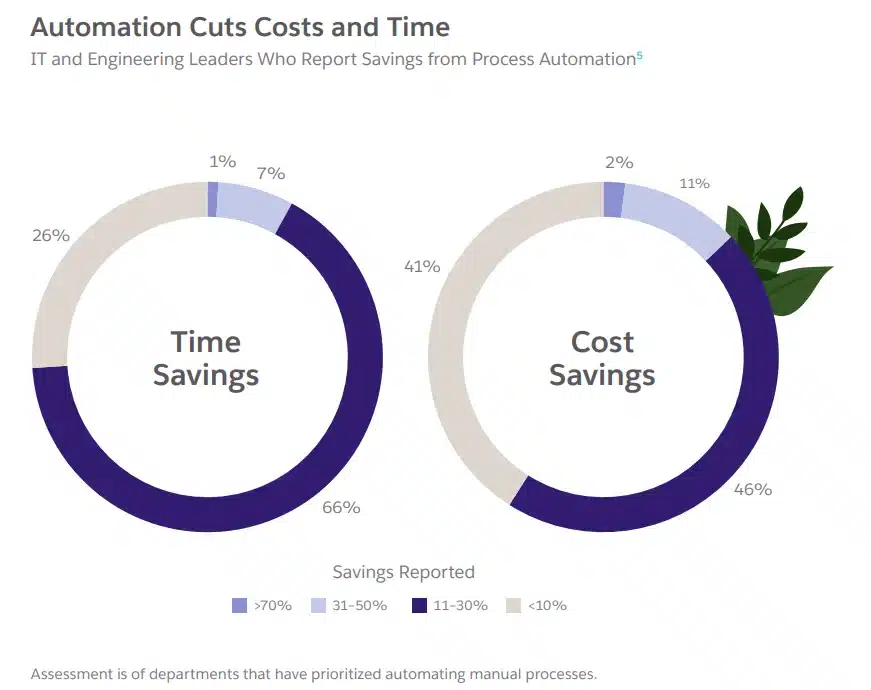Good salespeople know when to talk and when to listen. But this is tricky when the other person is not doing any of the talking themselves. In this case, you need to be asking the right questions to encourage detailed answers from prospects.
What is an open-ended sales question?
An open-ended question is one that requires a longer answer—i.e. it isn’t a “yes” or a “no”. Closed questions are things like ‘Have you heard of our service before?” or “Do you have any questions?”. These can be answered quickly, without giving much information.
Questions like “Where have you heard of our service before?” or “What areas of my business proposal do you have questions about?” are open, and therefore encourage a freer flow of conversation between parties.

Image created by author
20 open-ended sales-probing questions to ask your prospects
We’ve compiled some examples of the kinds of open-ended questions you could ask your prospects to get them talking.
Remember to keep in mind the method you’ll be using to ask your questions, even if you’re considering a range of options.
For example, some open-ended questions might require very long answers, making live chat impractical. Alternatively, for questions concerning pain-points, some customers may not appreciate the need to answer immediately on the phone and prefer to write their answers later.
- May I ask you some questions about your business?
It’s respectful to ask for consent before launching into your line of questioning. Asking this at the start of the interaction gives the prospect the chance to either shut the door or keep it open if they are genuinely interested.
This kind of question is most important in the context of cold calling; brush up on outbound calling techniques to ensure you don’t come across as intrusive in your introduction.
Of course, in some situations, it’s a given that you will be asking questions. For example, if the prospect has already filled out a form expressing interest and requesting a time to speak. In that case, you might open with, “Could you tell me about your business?”
- What needs to happen today to make this appointment worth your time?
Finding out exactly what your potential customer is looking for is a great way to build rapport. Once you know what they are expecting out of speaking with you, you can structure the meeting to ensure that their time is not wasted. Rapport-building questions like this help to establish a more personal connection.
Remember, even if you’re following a call script for certain points, you still want to personalize your approach where possible. You could also try, “I would like to talk about X, Y, and Z, is there anything else you would like to cover in this meeting?”
- What are your company’s goals for the next [3, 6, or 12] months?
It’s good to get to know the business and what they are trying to achieve. Then, you can situate your solution in the context of helping the prospect reach these goals.
- How does your company evaluate new products or services before buying?
Before diving into the specifics of your product or solution, try to gauge what the usual decision-making process is like. This way, you know where you stand and can avoid wasting time.

Image created by author
- Is there anyone else you think I should speak with?
You want to speak to the decision-maker. However, there may be many people involved with decisions surrounding new products and services. You might find yourself talking to someone with little sway in the company; it’s best to figure this out early.
If this happens, be polite. The person you are speaking with is not an obstacle but an opportunity to move forward. Try something like:
‘Hi [name], I was hoping to speak with [name of decision-maker]. What would be the best way for me to be connected with them?”
Remember, communication is the key.
- What prompted you to do something about this now?
If the prospect has agreed to or sought out a meeting with you, there must be a reason. Maybe a particular pain point has been bothering them for some time. Why now? Maybe they are re-evaluating priorities, they just got budget approval, or the business is growing and shifting focus.
It’s important to gather as much insight as you can into the business’ timeline and motivations so that you know what to expect going forward.
- What budget do you have allocated for this kind of [project/product/service]?
Although people generally don’t like to talk about money, it’s always important to ask about budget. Their answer will not only tell you how much they are willing to spend but also how much of a priority the product or service is.
While remaining open now, you may be able to probe later to find out whether more of the budget could be allocated to a solution once they understand exactly how it will help the organization.
- Tell me about your average work day.
An open question like this forces the prospect to answer in detail. Armed with the knowledge of their usual routines, you can discuss together how your solution could impact their daily work.
- What are your biggest pain points?
Talking about daily routines may lead you towards discussing pain points. This is highly relevant, as you want to demonstrate how you can solve real problems that make a difference. Asking about pain points before pitching your solution shows a willingness to listen and do your best to help—you’re not just there to sell. Pain points usually fall into one of four categories, so it’s a good idea to have a response ready for each category.

Screenshot taken from yesware.com
- You mentioned frustration around X. Can you elaborate?
A successful line of questioning builds on the conversation so far. Refer back to things that the prospect has previously mentioned. Not only does this prove that you’re listening attentively, but it also demonstrates that both parties are moving the conversation along in a productive direction.
- How have you tried to solve this problem in the past or with your current solution?
Try to scope out what the prospect has already done to solve the pain points they mentioned. Asking “What happened?” allows them to talk about their previous approach, what went wrong, and what they are looking for now.
- What has your past purchase experience with [product/service] been like?
Asking about previous attempts to solve the problem may lead you naturally to ask about buyer history. You want to understand the prospects’ past purchasing habits, as well as their relationship with their current provider.
If you can find out what the problems are/were with alternative providers, you can be sure to highlight how you will be different.
- How much time do you spend [performing a specific task]?
Getting into the nitty-gritty, you can start asking questions about the specifics of the workflow. While explaining their daily routines and pain points, the prospect may reveal that they spend a lot of time on a task that your solution can streamline or automate.
Allow the prospect to speak before jumping in with the solution. You want to win clients, but coming across as “too sales-y” from the jump is off-putting.
- How would you spend the extra time if you didn’t have to spend time on [specific task]?
This is an opportunity for the prospect to reflect on how team members could spend their time if they had a product to reduce their workload in other areas. This is especially so in the case of services offering automation.
Chances are, they could spend the time more profitably and contribute meaningfully to business goals. Don’t be afraid to use statistics to showcase how much time your service could save them.

- If this problem remains unsolved, how will it affect your teams?
Throughout the meeting, you should be constantly trying to gauge how interested the prospect is and how likely you are to close the deal. If your questions so far have revealed a low willingness to invest in a solution, it may be time for some gentle probing.
Invite the prospect to talk about how the problem is currently affecting the team, and the further hits to productivity and morale that may come if the same challenges persist. They may talk themself into realizing that fixing current pain points and productivity solutions need to be higher on their priority list.
- What results would you like to see with your ideal solution?
If money and authority were no object, what would the person you’re speaking to do to improve the business? How would they approach challenges in an ideal world? Find out their idea of a perfect solution, and then work backward to find a mutually beneficial agreement.
- What do you mean when you say X? Could you tell me more about that?
Don’t be afraid to ask clarifying questions throughout the conversation. All sales reps should receive employee training in active listening and asking thoughtful questions. This is how you get your prospects talking, extract meaningful information, and build a healthy working relationship.

Image sourced from gitnux.com
- What do you think about our offer so far?
This is an opportunity for the prospect to share any concerns they have. Once you know what the issues are, you can address them. It’s important not to be defensive or confrontational but instead to work with the prospect to put their mind at ease.
- Which areas of our solution do you still have questions about?
When you ask “do you have any questions?” that can be interpreted as a yes or no question. Instead, you want to encourage a longer response from the prospect by assuming that they will have questions and offering them the space to speak about them.
- What are you thinking for the next steps?
It’s important to establish the next steps before ending the call. Alternatively, you may opt for something like, “What date and time will you be available for a follow-up meeting?”. The goal is to make sure that this is not the end of the road—you’re keeping channels of communication open and outlining the path to future collaboration.
If all goes to plan, you’ll be writing up a business proposal before you know it.
Final thoughts
These example questions are a springboard. Use them to brainstorm more open questions that you can ask to get to know your prospects and position your product accordingly. Remember to listen, ask for clarification, and prioritize being friendly over pushing the product.




